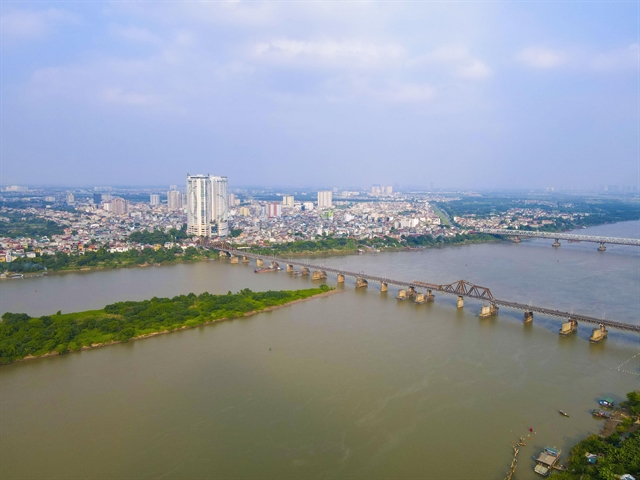 Society
Society


|
| Red River, Hà Nội. — VNA/VNS Photo |
HÀ NỘI — Việt Nam’s water demand is likely to reach about 122 billion cu.m each year from 2030, 1.5 times higher than the current amount.
This means water shortage may become severe if the country fails to effectively manage the resources, said Deputy Director of the Department of Water Resources Management under the Ministry of Natural Resources and Environment (MoNRE) Nguyễn Minh Khuyến.
Khuyến noted that Việt Nam is exploiting 84 billion cu.m of water each year, including 3.8 billion cu.m of underground and 80.6 billion cu.m of surface water. The peak water consumption time is in the dry season from July to September when over 80 per cent of water is used for agricultural activities, he said.
The official underlined that some localities have still faced difficulties in accessing clean and safe water, especially those in the central and southcentral regions. The situation is even worse in the Mekong Delta region where saltwater intrusion is increasingly severe.
It is forecast that 11 out of the 16 major river basins in Việt Nam will experience water stress, especially in the four main river basins from which 80 per cent of Việt Nam’s GDP is generated, including the Hồng (Red) River – Thái Bình river basin, Mekong River basin, Đồng Nai River basin and the basins of rivers in the southeast region, he said.
As part of the efforts to better manage water resources, the Law on Water Resources was issued in 2012. So far, the Government and the MoNRE have promulgated nearly 70 documents, while localities have also issued nearly 500 others to guide the implementation of the law.
To date, six out of the 15 water resources planning have been approved by the Government. At the same time, among the 63 cities and provinces nationwide, 44 localities have approved of the list of water sources that need to be protected and 44 have approved and made public the list of lakes, ponds and lagoons that must not be encroached upon, said Khuyến.
However, he cited a comment from the World Bank (WB) and the UN Food and Agriculture Organisation (FAO) that Việt Nam is a country with low water usage efficiency, especially in the agricultural sector.
According to the World Bank's assessment in 2019, water used in agriculture accounted for 81 per cent of Việt Nam’s total water consumption, but the sector currently generated only 17-18 per cent of the national GDP and created jobs for 45 per cent of the labour force.
Meanwhile, water wastage has remained, and the rate of water loss in urban and rural areas has still been high, at about 25 per cent. The efficiency of water exploitation is much lower than the designed capacity of water works, especially those for irrigation and agriculture, said Khuyen.
He said that currently, the MoNRE is working on a draft revised Law on Water Resources, focusing on four key policies of ensuring water source security; socialising the water sector; promoting the water economy; protecting water resources and preventing harm caused by water.
In response to this year’s World Water Day, themed “Accelerating Changes”, through various forms and methods, the MoNRE has spread messages of saving water to protect the planet, contributing to promoting social progress and accessing safe water. Small actions will lead to great changes, he concluded. — VNS